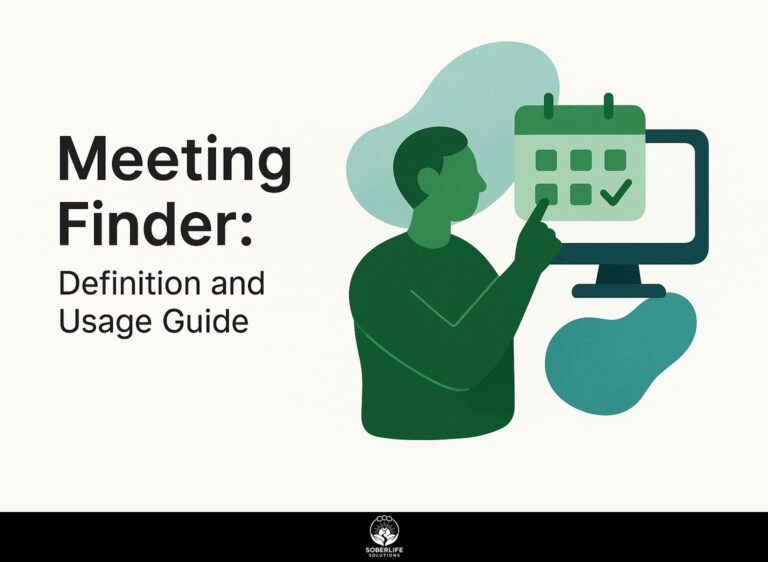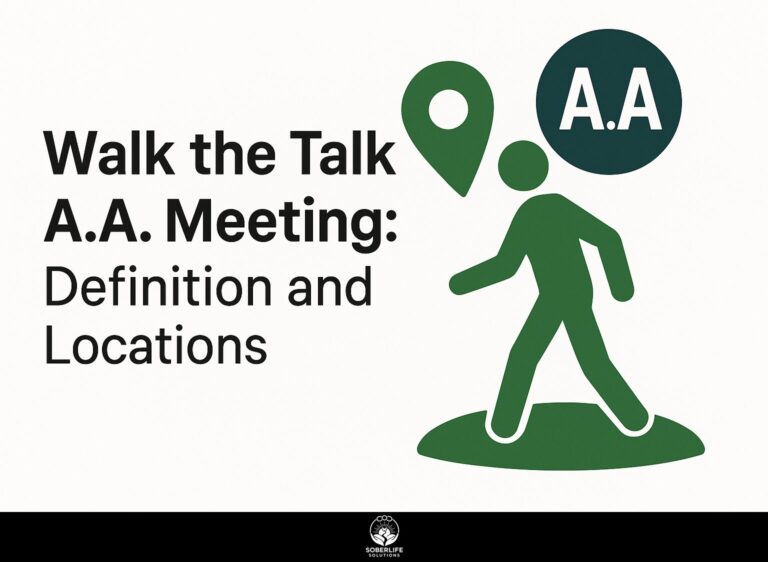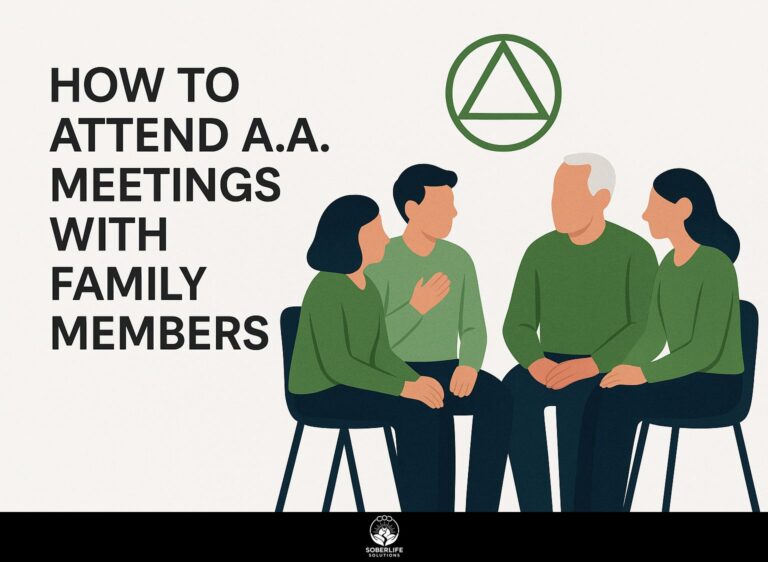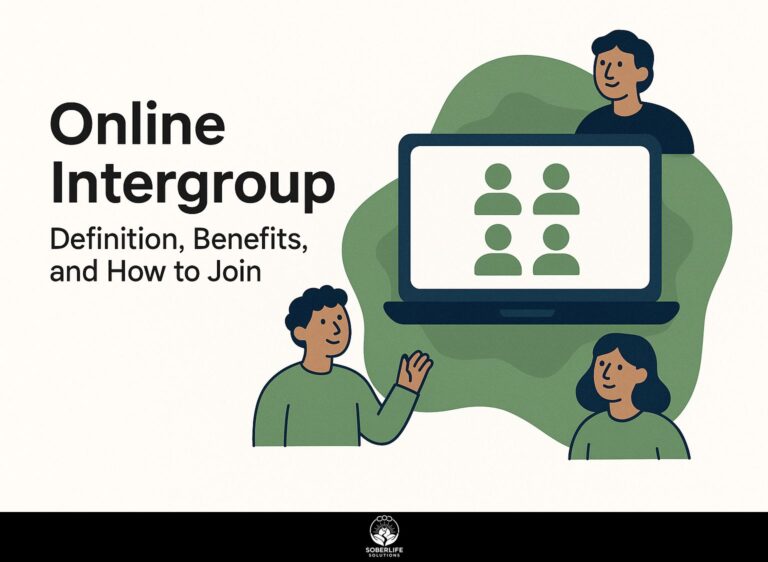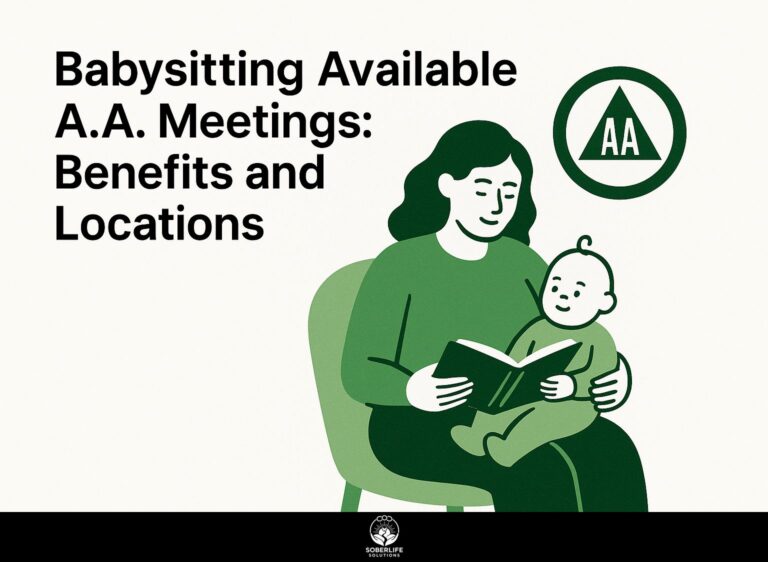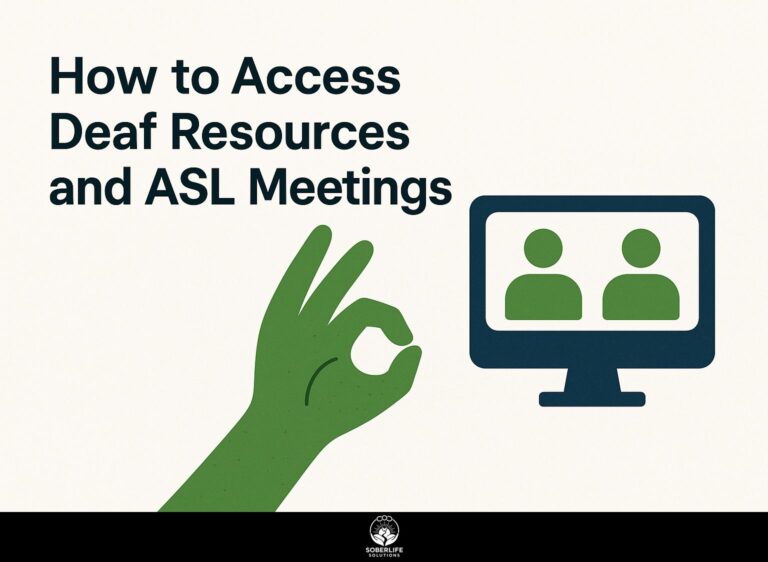How to Join and Secure A.A. Zoom Meetings: A Guide
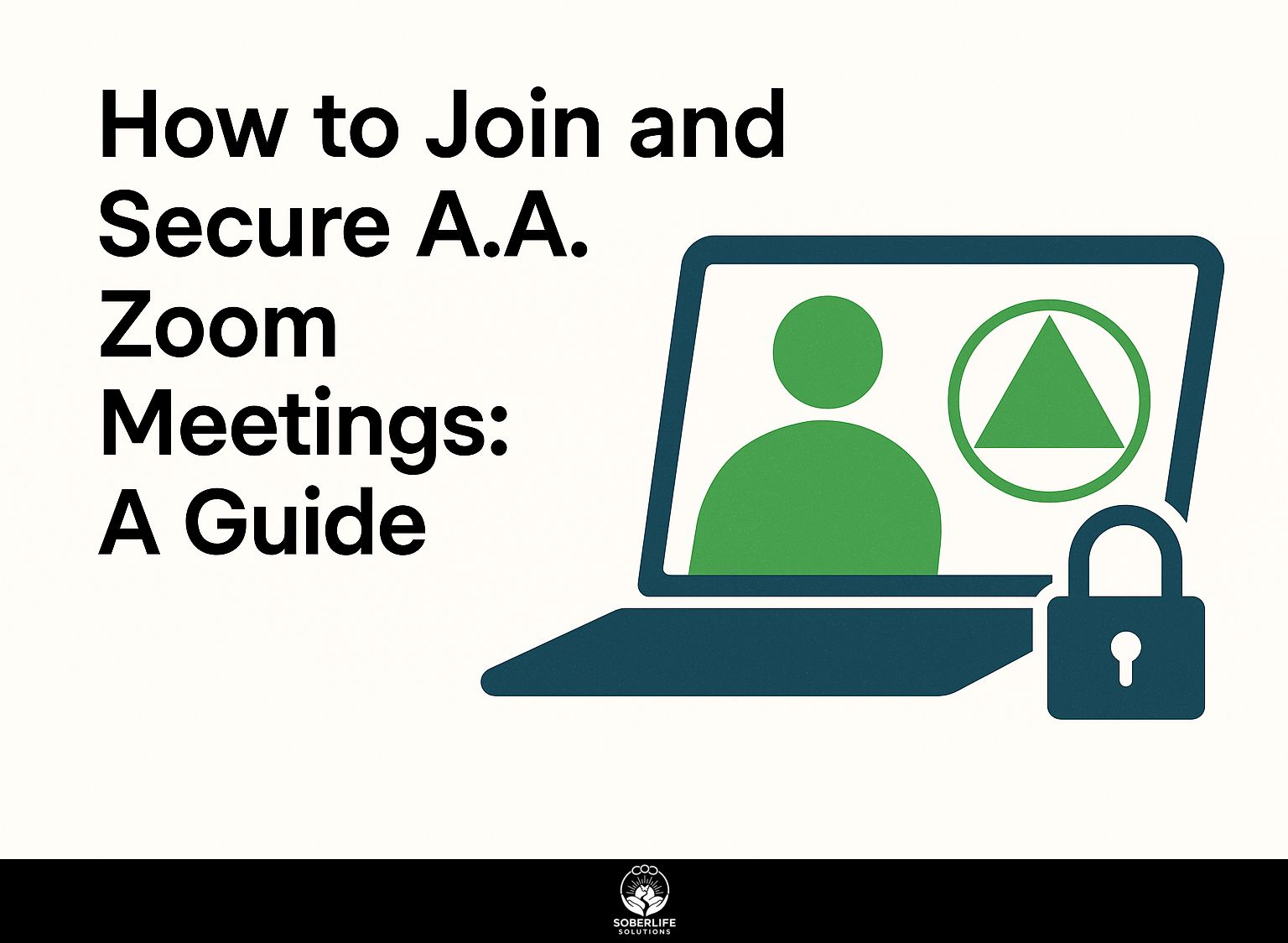
Participating in A.A. Zoom meetings can be an important part of recovery, and this Meeting Guide will provide all the details you need to begin. By connecting with your local district, you’ll get important meeting details and find weekly gatherings that work with your schedule. The Central Office provides many resources to guide you through this process. Read this guide to find an online community that offers help and can be easily accessed.
Key Takeaways:
Benefits of Joining A.A. Online
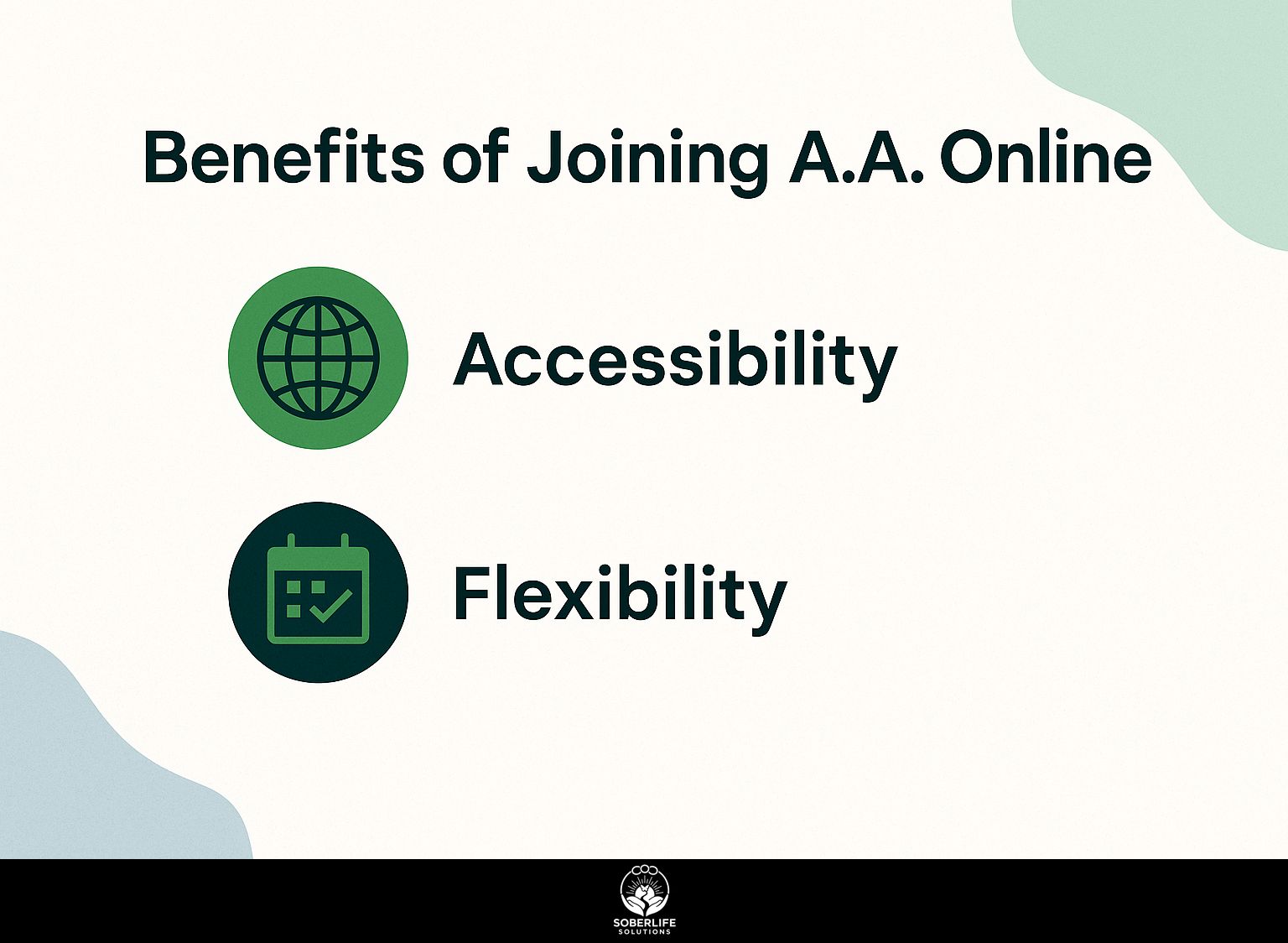
Joining A.A. online has many benefits, such as being easier to access for people with mobility problems and allowing participation from anywhere. According to research published in ScienceDirect, online platforms not only facilitate ease of access but also enhance the giving and receiving of social support among participants. As virtual recovery groups continue to trend, their popularity highlights a shift towards more accessible and flexible support options for individuals seeking sobriety.
Accessibility
A.A. Zoom meetings eliminate geographical barriers, allowing participants from rural areas or those with disabilities to join easily.
These online meetings help people connect with others, preventing feelings of isolation during their recovery.
For example, many groups use local A.A. tools like the ‘Meeting Guide’ app, which helps find online meetings and makes it easy for participants to connect with sponsors and other members (our guide to finding meetings by name offers additional search methods).
Since moving online, some regions have seen a surprising 40% rise in attendance, showing how technology can improve access and support for communities.
Resources like A.A.’s official website provide useful materials and tools to help newcomers with their recovery.
Flexibility
The flexibility of scheduling allows A.A. members to attend meetings that fit their personal schedules, with options available across various local time zones.
Members can choose from many meeting times designed for different groups of people. For instance, morning sessions may cater to those who prefer starting their day with support, while evening meetings can accommodate working individuals.
Some groups offer weekend meetings specifically for those with weekday commitments. A common schedule might include:
- Monday morning at 7 AM,
- Wednesday at noon, and
- Saturday at 5 PM,
ensuring ample opportunities for participation. Using platforms such as A.A. Meeting Finder can help members find meeting times that work with their schedules easily. For an effective way to coordinate these meetings across different time zones, TimeandDate.com offers a World Clock Meeting Planner, as noted by industry experts in a recent publication.
How to Find A.A. Zoom Meetings
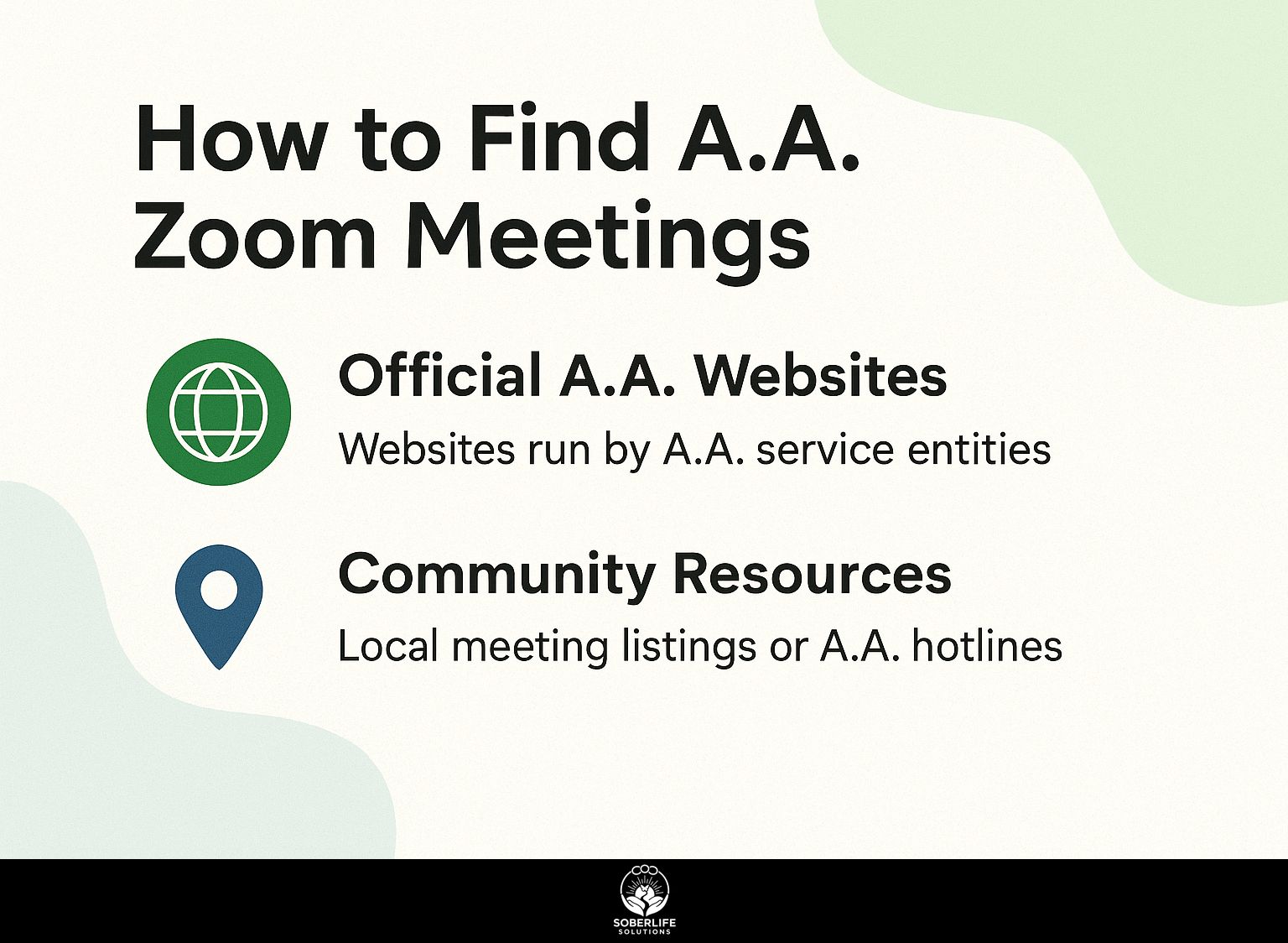
You can easily find A.A. Zoom meetings through official websites and community resources, making it simple to get local support. For those who are traveling or simply want additional ways to stay engaged, exploring how to stay connected with A.A. meetings while traveling can provide valuable insights.
Official A.A. Websites
Official A.A. websites, such as the General Service Office, list reliable Zoom meetings with essential details like meeting passwords and host information.
Besides the General Service Office, helpful resources include the A.A. World Services site and local district websites.
You’ll find updated meeting times, formats, and links to join. To use these sites well, search for parts marked ‘Find A Meeting’ or ‘Virtual Meetings.’
Screenshots showing how to find these sections can greatly improve the user experience, helping attendees find important details quickly.
By checking these sites regularly, you can stay informed about any schedule changes or new meetings that may become available. For those seeking a detailed approach, our guide on how to access and update A.A. meeting lists can be an invaluable resource.
Community Resources
Community forums and local A.A. contact groups are helpful for finding more Zoom meetings and meeting others.
These platforms provide opportunities to exchange information about meeting times, share personal experiences, and offer mutual support.
For instance, local A.A. Facebook groups often post schedules for upcoming virtual gatherings and allow members to connect directly via messaging. Similarly, WhatsApp chats enable members to reach out for real-time updates and encouragement.
Being part of these groups helps you stay updated and feel connected, which is important for staying sober.
Joining a Zoom Meeting
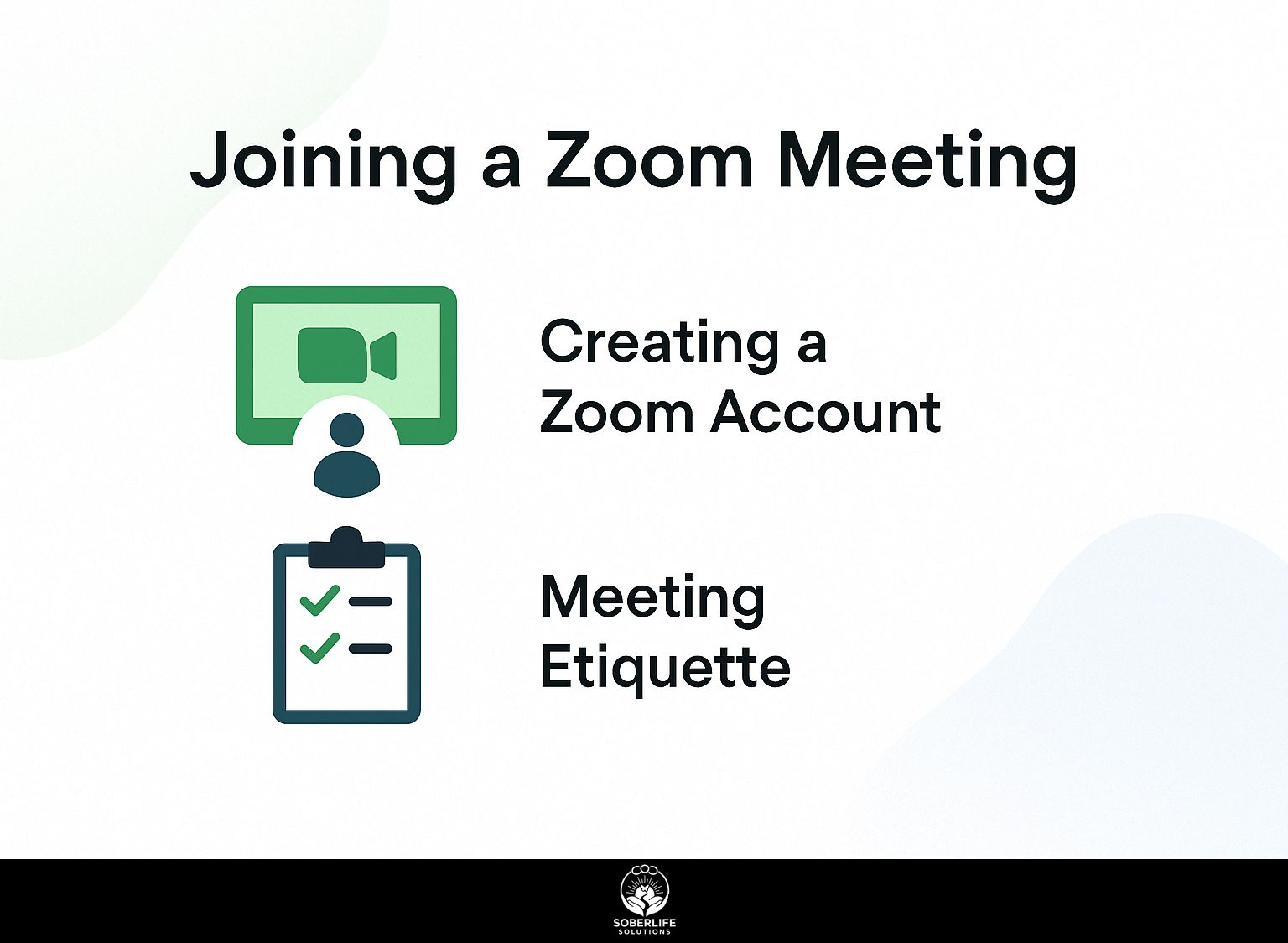
To join a Zoom meeting, sign up for a Zoom account and stick to the meeting guidelines to keep things respectful.
Creating a Zoom Account
To participate in A.A. Zoom meetings, users must set up a Zoom account. This process is fast, free, and allows entry to many online meetings.
Start by visiting the Zoom website and clicking ‘Sign Up, It’s Free.’ Enter your email address and create a strong password. Confirm your email through the link sent to you for verification.
After you log in, go to your profile to create a password for your meeting to make it more secure. For added protection, enable two-factor authentication in your account settings.
This process takes around 10 minutes and provides a safe and smooth experience when joining A.A. meetings.
Meeting Etiquette
Knowing meeting rules is important for a successful A.A. Zoom session, focusing on good habits to prevent interruptions from attendees.
To keep a respectful environment, participants should mute their microphones when they’re not talking to reduce background noise. Respect others by not interrupting when they are talking; using features like the raise hand button can help with this.
Common issues include interruptions and participants talking over each other. Co-hosts can handle interruptions by politely reminding speakers of the rules and explaining the schedule when needed.
Arranging how ideas are communicated can greatly improve comprehension and collaboration.
Securing Your A.A. Zoom Meeting Experience
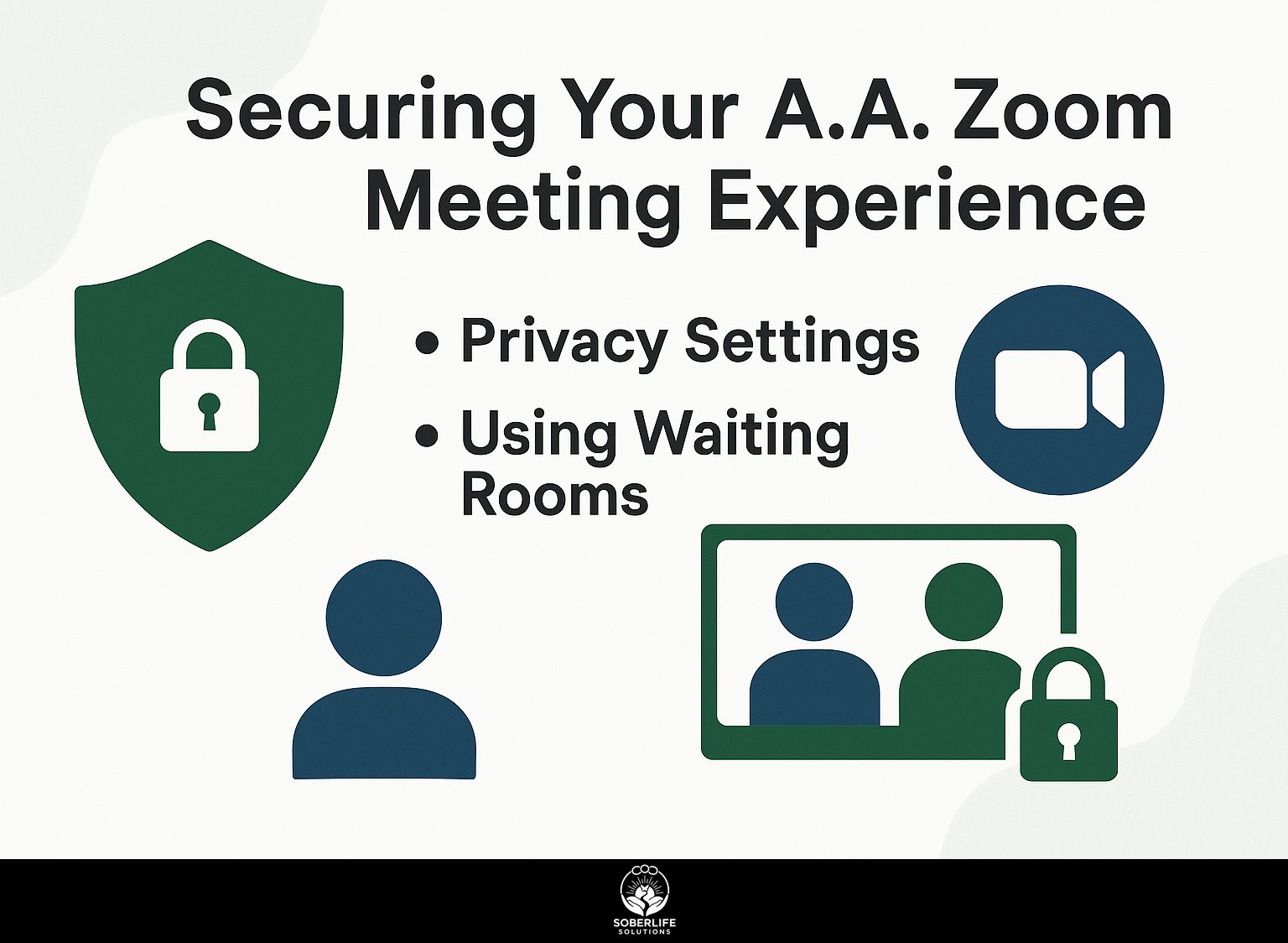
It’s important to keep A.A. Zoom meetings secure.
Use various tools to protect participants from interruptions and stop unauthorized entry. For additional insights, see also: Zoom Meetings for AA: Access and Security Tips.
Privacy Settings
Changing the privacy settings on Zoom prevents unwanted access and protects the meeting for all participants.
To improve your Zoom meetings, turn on password protection by creating a specific password in the ‘Meeting Settings’ menu.
Set screen sharing to `Host Only’ to avoid participants unintentionally interrupting the meeting. A study shows that 30% of problems in online meetings are caused by unwanted screen sharing or interruptions. Adjusting these settings can greatly decrease these issues. For context, an in-depth analysis by NIST provides insights on how to prevent eavesdropping and enhance privacy during virtual meetings.
Consider using the `Waiting Room’ feature, which allows hosts to vet attendees before granting access, further enhancing meeting security.
Using Waiting Rooms
Using waiting rooms for A.A. Zoom meetings lets hosts check attendees before letting them join the meeting.
To enable waiting rooms, go to your Zoom settings under ‘Meeting’ and toggle on ‘Waiting Room.’ This feature helps maintain a secure environment by preventing unauthorized access.
When handling changes, send a message to inform attendees why they are waiting. Use tools like the ‘Chat’ function to give updates, so everyone feels included and knows what’s happening.
Establish guidelines for entry, clearly communicating expectations to participants before the meeting begins.
Frequently Asked Questions
1. How do I join an A.A. Zoom meeting?
To join an A.A. Zoom meeting, you will need to have the meeting link or ID provided by the host. Simply click on the link or enter the ID on the Zoom app or website to join the meeting.
2. Is there a password required to join an A.A. Zoom meeting?
Some A.A. Zoom meetings may have a password for added security. The meeting host will usually provide the password along with the meeting link or ID. If you encounter any issues, you can contact the host for the password.
3. How can I secure my A.A. Zoom meeting?
To secure your A.A. Zoom meeting, you can enable the waiting room feature. This means that participants will have to wait for the host to let them into the meeting. You can limit screen sharing to stop any interruptions during the meeting.
4. Can I join an A.A. Zoom meeting without a webcam?
Yes, you can join an A.A. Zoom meeting without a webcam. It’s suggested to use a webcam so others can see you during the meeting. If you do not have a webcam, you can still join using your computer audio or by dialing in on your phone.
5. How can I keep my privacy during an A.A. Zoom meeting?
To keep your privacy during an A.A. Zoom meeting, you can change your display name to something that does not show who you are. You can also disable your video and/or audio if you do not want to be seen or heard by other participants. You can use a virtual background to cover your environment.
6. What should I do if I encounter technical difficulties during an A.A. Zoom meeting?
If you encounter any technical difficulties during an A.A. Zoom meeting, try restarting your internet connection or device. If the problem continues, reach out to the meeting host for help. It is also helpful to test your audio and video settings before joining the meeting to avoid any potential issues.

